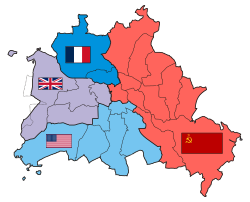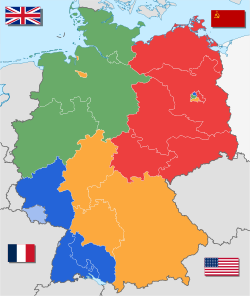Two more days and July
1945 will be no more. It
doesn't seem possible that
time could fly by so fast.
I suppose everyone at home
is busy with the harvest
and all now. What is Harley
doing? I suppose he is
about talked out and don't
know what to do now, after
being so busy all the time.
Since arriving back from
my furlough I have been busy
also. I guess they want to get
the work here cleaned up and
get everything ready to move
into our occupational area. I
guess we are going to a good base.
We have been told we
would have plates to eat off
of and have beds and mattresses
again. It sure seemed good to
crawl down between sheets
at the Red Cross while I was
on furlough. I guess it is just
the common everyday things
that a person misses most.
I had a letter from Ruth K.
the other day. She told me about
her wedding to be and then her
breakup. She didn't say what
was wrong.
Received your letter and Harley's
the other day. Also one from
Lenore and Luella. They were
all so tickled to think Harley
was home. Luella said she
wanted to meet the train, but
due to gas rationing it was
almost impossible. Well when
I get around to get home, gas
rationing will probably be history.
We had a very bad hailstorm
the other night. It has been rather
cool since then. Just cool enough
to make a person feel good.
My buddy Pile is sitting outside
reading and keeps bothering me to
come and see an airplane flying
around. I've seen enough of them
for awhile. I can recognize a
plane by its sound.
Well this is about all for
this letter. Please write when
you can. Did you find out
about the shoes I asked for?
Love Ralph.
The next letter will be posted on August 4th.
Background Information (and comments):
- Here is what I found about "occupational areas" in general:
| German Reich | ||||||||||||||||
| Deutsches Reich | ||||||||||||||||
| Military occupation | ||||||||||||||||
| ||||||||||||||||
|
Post-Nazi German occupation borders and territories from 1945 to 1949.
British (green), French (blue), American (orange) and Soviet (red) occupation zones. Saar Protectorate (light blue) in the west under the control of France. Berlin is the quadripartite area shown within the red Soviet zone. Bremen consists of the two orange American exclaves in the British sector. | ||||||||||||||||
| Capital |
| |||||||||||||||
| Languages | ||||||||||||||||
| Political structure | Military occupation | |||||||||||||||
| Governors (1945) | ||||||||||||||||
| • | British zone | F. Mar. Montgomery | ||||||||||||||
| • | French zone | Gen. Lattre de Tassigny | ||||||||||||||
| • | US zone | Gen. Eisenhower | ||||||||||||||
| • | Soviet zone | Marshal G. K. Zhukov | ||||||||||||||
| Historical era | Cold War | |||||||||||||||
| • | Surrender | 8 May 1945 | ||||||||||||||
| • | Allied Control Council | 5 July 1945 | ||||||||||||||
| • | Saar Protectoratea | 15 December 1947 | ||||||||||||||
| • | Federal Republic of Germany | 23 May 1949 | ||||||||||||||
| • | German Democratic Republicb | 7 October 1949 | ||||||||||||||
| • | Final Settlementc | 12 September 1990 | ||||||||||||||
| Population | ||||||||||||||||
| • | 1945 est. | 64,260,000 | ||||||||||||||
| • | 1949 est. | 68,080,000 | ||||||||||||||
| Currency |
| |||||||||||||||
| ||||||||||||||||
| Today part of | ||||||||||||||||
| a. | Joined the Federal Republic of Germany (West Germany) on 1 January 1957. | |||||||||||||||
| b. | Reunited Germany by joining the Federal Republic of Germany on 3 October 1990. | |||||||||||||||
| c. | German reunification took place on 3 October 1990. | |||||||||||||||
| d. | The western Allied zones of Germany and the western sectors of Berlin. | |||||||||||||||
| e. | The Soviet zone of Germany and sector of Berlin. | |||||||||||||||
 The four sectors of the Allied occupation of Berlin and exclaves. | ||||||||||||||||
Upon the defeat of Nazi Germany in World War II, the victorious Allies asserted their joint authority and sovereignty over 'Germany as a whole', defined as all territories of the former German Reich which lay west of the Oder–Neisse line, having declared the extinction of Nazi Germany at the death of Adolf Hitler (see 1945 Berlin Declaration). The four powers divided 'Germany as a whole' into four occupation zones for administrative purposes, under the United States, United Kingdom, France and the Soviet Union respectively; creating what became collectively known as Allied-occupied Germany (German: Alliierten-besetztes Deutschland). This division was ratified at the Potsdam Conference (17 July to 2 August 1945).[not verified in body] The four zones were as agreed in February 1945 by the United States, United Kingdom and Soviet Union meeting at the Yalta Conference; setting aside an earlier division into three zones (excluding France) proposed by the London Protocol.
At Potsdam, the United States, United Kingdom and the Soviet Union approved the detachment from 'Germany as a whole' of the German eastern territories east of the Oder–Neisse line; with the exact line of the boundary to be determined at a final German Peace Treaty. This treaty was expected to confirm the "shifting westward" of Poland's borders, as the United Kingdom and the United States committed themselves to support in any future peace treaty the permanent incorporation of former eastern German territories into Poland and the Soviet Union. From March 1945 to July 1945, these former eastern territories of Germany had been administered under Soviet military occupation authorities, but following the Potsdam Conference they were handed over to Soviet and Polish civilian administrations and ceased to constitute part of Allied-occupied Germany.
In the closing weeks of fighting in Europe, United States forces had pushed beyond the agreed boundaries for the future zones of occupation, in some places by as much as 320 kilometres (200 mi). The so-called line of contact between Soviet and American forces at the end of hostilities, mostly lying eastward of the July 1945-established inner German border, was temporary. After two months in which they had held areas that had been assigned to the Soviet zone, U.S. forces withdrew in the first days of July 1945.[1] Some have concluded that this was a crucial move that persuaded the Soviet Union to allow American, British and French forces into their designated sectors in Berlin, which occurred at roughly the same time (July 1945), although the need for intelligence gathering (see Operation Paperclip) may also have been a factor.[2]


This place is stunning. The architecture is beautiful and the decoration is spectacular. Environment was transparent and resonant and warm and immediate. I loved the New York venues and my experience here was very exciting.
ReplyDelete